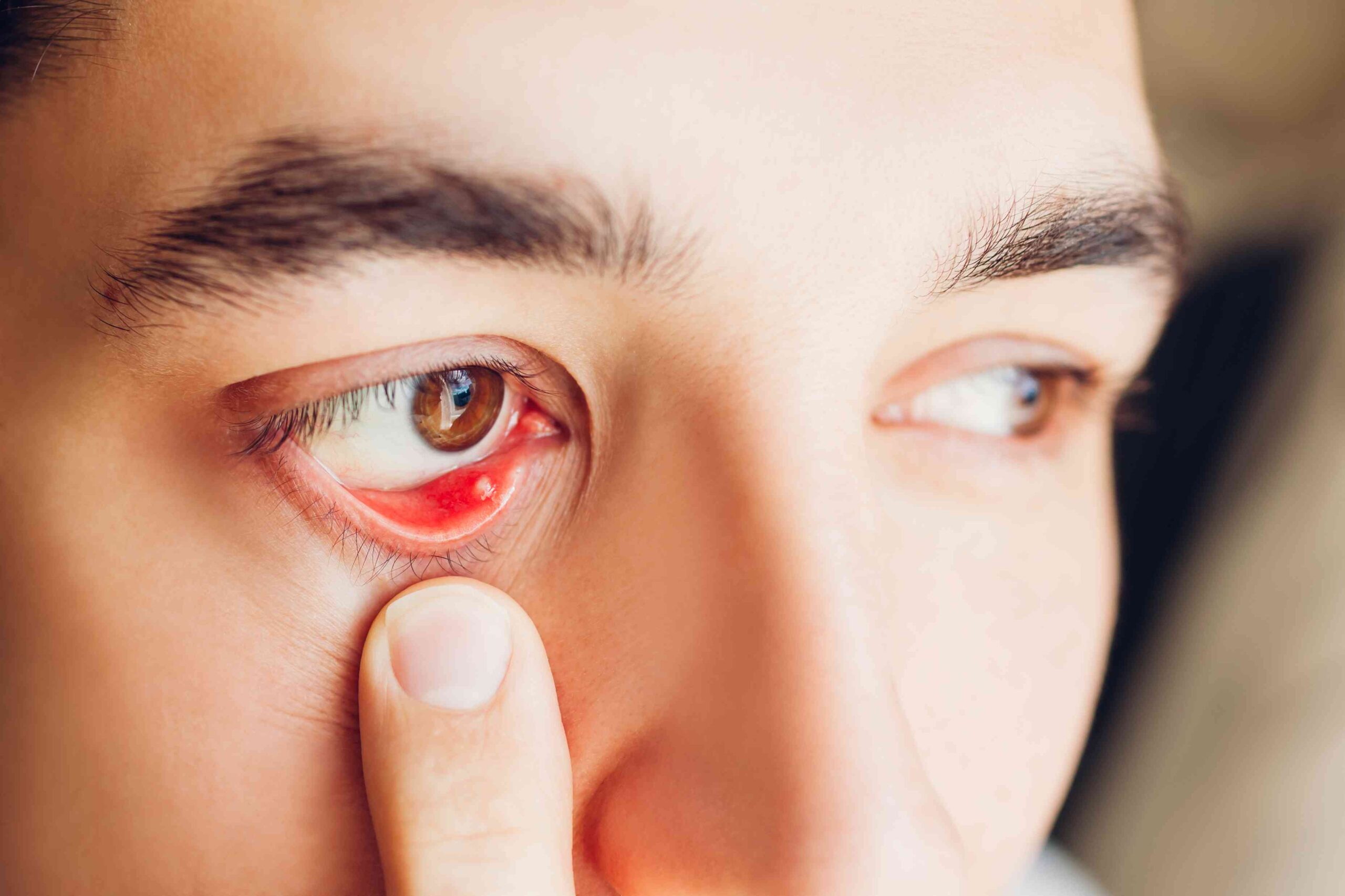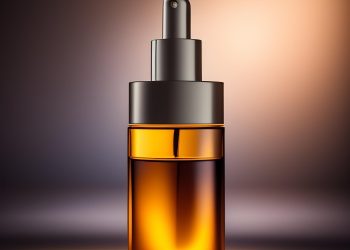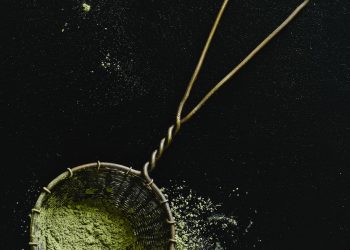Do you have a lump on your eyelid? It’s called a stye.
This minor condition causes pain and discomfort, as well as red and watery eyes [1].
It comes in two types: external stye and internal stye. As the name implies, the external type appears outside the eyelid, while the internal one grows inside, and is typically more painful [1].
The most frequent cause is an infection of Staphylococcus aureus bacteria, which are commonly found on the surface of the skin [2].
In most cases, the swelling of the eyelid lump lasts for up to three days before it pops out and drains [3].
It may cause the vision to blur a little, but it’s good to know that it usually doesn’t leave any permanent damage [2].
Now, even though it’s not a serious infection, you would still want to get relief from the uneasiness that it causes.
Here are some quick-acting home remedies for stye that you would want to try.
1. Warm Compress
For styes, warm compress can definitely help. In fact, since ancient times, it has been “universally employed in the treatment of various conditions of the eyes” [4].
Researchers explain that heat has a two-fold effect on eye conditions: analgesic and therapeutic.
As an analgesic, it tones down the pain caused by the inflammation. As a therapeutic, it helps heal the infected site [4].
It also acts as a vasodilator that increases blood flow to the inflamed tissue on the eyelid not only to bring comfort but also to speed up recovery [4].
It is often recommended as an initial treatment for stye to facilitate drainage of pus [5, 6].
Despite its many benefits, experts say that more randomized controlled trials are needed to confirm its efficacy and safety [5, 6].
What You’ll Need:
- 1 bowl of water
- 1 towel
Recommended Directions:
- Boil water in a pot.
- Soak clean towel in the water.
- Wring out to get rid of excess water.
- Close your eyes.
- Gently press warm towel on eyelid with stye.
- Leave it on for five minutes.
- Take a break for a few seconds.
- And then put it back again.
- Repeat remedy three to four times a day until stye is drained out.
2. Green Tea
One of the world’s most popular beverages is tea, an infusion of leaves from an evergreen shrub called Camellia sinensis [7].
Green tea has many benefits for the health, which includes treatment of eyelid inflammation such as styes.
It works by reducing inflammation and combating the bacteria that causes it.
Its inhibitory effects against Staphylococcus aureus has been well established in scientific literature [7, 8, 9].
Its anti-inflammatory properties, meanwhile, can be attributed to its ability to reduce oxidative stress and disrupt the activities of pro-inflammatory enzymes [10, 11].
What You’ll Need:
- 1 cup of hot water
- 1 green tea bag
Recommended Directions:
- Dip the bag of green tea in water for three to five minutes.
- Squeeze bag a little to remove excess water.
- Close your eyes.
- Place teabag on top of painful eyelid.
- Wait for five minutes before removing the tea bag.
- Put it back in the warm water, and then re-apply.
- Do this several times a day until stye disappears.
3. Turmeric
Turmeric, which belongs to the same family as ginger, has been widely recognized in Ayurvedic medicine for its pharmacological properties whether used topically, ingested orally, or inhaled as steam [12].
How many times have you heard turmeric being hailed as a potent healer for inflammation, irritation, and many other health issues? Not just once or twice, but countless times, right?
In a series of experiments conducted in University of California in the United States, it was reported that turmeric’s main compound curcumin demonstrated anti-inflammatory effects [12].
It works by inhibiting various molecules that trigger this process [12].
Other studies echo these findings, confirming the efficacy of turmeric as an anti-inflammatory [13, 14, 15].
Its oil extract has also been found to be effective in controlling the infection-causing Staphylococcus aureus [16].
What You’ll Need:
- 1 tablespoon of turmeric
- 1 drop of turmeric oil
- 2 cups of water
- 1 teaspoon of turmeric powder
- 1 cup of warm milk
Recommended Directions:
- Stir a tablespoon of turmeric powder in water.
- Boil the solution until it is reduced to half.
- Add a drop of turmeric oil.
- Let it cool.
- Strain mixture through a cheese cloth.
- Wash affected eyelid with this solution three times a day for four to five days.
- Add a teaspoon of turmeric powder to milk.
- Mix well.
- Drink this every night before sleeping.
4. Clove
Probably the most popular use of clove is for relieving toothache [17].
It is often applied directly on the tooth to minimize swelling and ease pain.
Did you know that this herb has also served as a traditional medicine for many other conditions for the last 2,000 years, particularly in China and India [17]?
Yes, that’s true. And topical application of clove is also said to help ameliorate eyelid swelling [17].
That’s because clove acts as an anti-inflammatory agent. It efficiently suppresses the production of cytokines that trigger the process of inflammation in the body [18, 19].
Its eugenol has antinociceptive effects while its beta-caryophyllene can work as a local anesthetic [19, 20].
Not only does it block signal pains in the brain, it also desensitizes the local area to make it feel numb.
Moreover, this herb is also a proven antibacterial that can kill the source of infection, reports a 2010 study [21].
What You’ll Need:
- 5 cloves
- 1 glass of water
Recommended Directions:
- Put clove in a glass of water.
- Wait for 15 minutes.
- Dip a clean cloth into the water.
- Apply cloth gently on the eyelid.
- Use this technique twice a day for three days.
5. Coriander Seeds
Medicinal plants such as coriander are highly prized for their therapeutic properties [22].
Just a few of the many benefits that you can get from coriander include antibacterial, diuretic, laxative, antipyretic, expectorant and so on [22].
For many years, it has been used to resolve colds, fever, indigestion, nausea, joint pain, vomiting and many others [22].
For the problem of stye, its anti-inflammatory actions can come to your rescue.
It tones down swelling by inhibiting nitric oxide production, and the activities of pro-inflammatory cytokines [23].
What You’ll Need:
- 1 teaspoon of coriander seeds
- 1 cup of water
Recommended Directions:
- Put water in a pot.
- Add coriander seeds.
- Bring to a boil.
- Remove pot from the stove.
- Let the water cool down a little.
- Use this solution to wash affected eyelid.
- Do this procedure twice a day for one week.
6. Guava Leaves
Commonly grown in tropical countries, guava is not only a delicious crop, it is also an important medicinal plant that has many curative purposes [24].
Most of its biologic activities can be attributed to its phenolics, flavonoids and terpenoids, among others [24].
With its anti-inflammatory and antinociceptive properties, the leaves of guava can be used to relieve the pain and swelling caused by styes [24].
A 2010 study involving animal subjects confirms this, indicating its efficacy in both acute and chronic inflammation [25].
That’s not all, it also works as a strong antibacterial, preventing the growth and spread of Staphylococcus aureus and other bacterial strains [26, 27, 28].
The roots and bark of guava also can also inhibit the bacterial strain that causes styes [28].
To summarize, guava leaves can help you deal with stye in three ways: reduce pain, tone down swelling, and kill the microorganisms causing the infection.
What You’ll Need:
- 3 guava leaves
- 3 cups of water
Recommended Directions:
- Boil water in a pot.
- Add guava leaves.
- Lower heat and simmer for 20 minutes.
- Remove from the stove.
- Allow water to cool a little.
- Soak a cloth in warm water.
- Apply on affected eyelid for five minutes.
- Re-apply every three minutes until water is no longer warm.
- Do this once a day for three to four days.
7. Aloe Vera
Known for its soothing, wound healing and anti-inflammatory properties, aloe vera has always been the go-to remedy for various skin injuries such as burns, wounds, cuts, and scrapes [29].
This herbal remedy, which is described to be “as old as civilization” has also long been used to treat many other health problems [30].
These include stomach ailments, constipation, ulcer, diabetes and fungal infections [30].
For the inflammation of the eyelids, aloe vera can surely help.
Both the gel and leaves of this plant have been found to possess antibacterial activities against stye-causing Staphylococcus aureus [31].
Not only that, topical application of the gel can also help speed up healing of lesions and infections, according to a study that can be found in Annals of Plastic Surgery Journal [32].
What You’ll Need:
- 1 aloe vera leaf
Recommended Directions:
- Cut an aloe vera leaf and extract the gel.
- Use a cotton tip to apply gel on the eyelid.
- Let it sit for 15 to 20 minutes before washing off with warm water.
- Use this procedure three times a day for five days.
8. Chamomile
Did you know that chamomile has been used as a traditional medicine since the ancient times in Egypt, Rome and Greece [33]?
Today, its popularity as a therapeutic agent has spread all over the world, particularly in Europe, Africa, Asia, and North and South America [33].
When it comes to easing the condition of stye, chamomile can be of use in several ways.
First, it works as an antiseptic, disinfecting the area of the swollen eyelid to make sure no dust or debris worsens the problem [33].
Second, it’s a strong antibacterial that can get to the bottom of the problem, killing and preventing the spread of Staphylococcus aureus, the same way it handles other pathogenic bacteria [34].
Third, it’s an anti-inflammatory that can help minimize the swelling in the eyelid [34].
Finally, it works as an analgesic, which means that if you are in pain, this can bring you the relief that you are looking for [35].
What You’ll Need:
- 1 tablespoon of chamomile flowers
- 1 tablespoon of thyme leaves
- 3 cups of water
Recommended Directions:
- Boil the chamomile flowers and thyme leaves in a pot of water.
- Remove from heat.
- Let the concoction cool for a few minutes.
- Soak a cloth into the solution.
- Apply on top of the eyelids three times a day until swelling subsides.
9. Castor Oil
One of the remedies for stye recommended by Earth Clinic is castor oil, which is composed of almost 90 percent ricinoleic acid, a strong anti-inflammatory agent.
Obviously, this is how castor oil helps alleviate stye—by reducing inflammation, and in the process, relieving pain.
A review of the pharmacological activities of castor oil confirms this, indicating that the extract of this plant can significantly reduce both acute and chronic inflammation in animal subjects [36].
The flavonoids in castor have been found to be the ones responsible for these actions [36].
Castor oil also has effective antibacterial activities against Staphylococcus aureus, so it can also destroy the source of infection [36].
As an antinociceptive, castor blocks pain signals in the brain to minimize the ease and discomfort caused by stye [37].
What You’ll Need:
- 5 drops of baby shampoo
- 1 cup of warm water
- 1 warm towel
- 1 teaspoon of castor oil
Recommended Directions:
- Rinse affected eyelids with a mixture of baby shampoo and warm water.
- Gently press warm towel on top of the eyelid for three to five minutes.
- Apply castor oil on the external bump using a cotton tip.
- Do this twice a day for up to five days.
10. Potato
What make potato a suitable treatment for this condition are its astringent and anti-inflammatory properties, which are believed to prevent skin irritation as well as reduce pain and swelling.
The glycoalkaloids in potato have been observed to have anti-inflammatory effects, as reported in a 2013 study [38].
They work by inhibiting the production of nitric oxide and cytokines, the primary hallmarks of inflammation [38, 39].
What You’ll Need:
- 1 medium sized potato
Recommended Directions:
- Grate the potato.
- Wrap the potato in a clean cloth or cheese cloth.
- Put it on top of the painful area for 10 minutes.
- Follow this technique three times a day for four to five days.
11. Garlic Juice
Garlic is one of the herbal remedies you can’t do without.
It has been found effective in curing a vast array of health problems, including minor infections such as stye.
A 2009 study published in the Journal of Medicinal Plants Research reports that garlic has strong antibacterial effects against Staphylococcus aureus and many other strains of bacteria [40].
Allicin, its main compound, is said to be the source of most of its pharmacological properties [41].
Using garlic juice can surely help tone down the swelling and irritation in your eyelid. Just be careful not to get any garlic juice inside your eye.
What You’ll Need:
- 2 cloves of garlic
- 1 teaspoon of water
Recommended Directions:
- Crush garlic to extract the juice.
- Dilute garlic juice in water.
- Apply around the affected area.
- Do this everyday for one to two weeks.
12. Baby Shampoo
There’s no scientific study that provides evidence for this particular stye remedy.
However, many people who have tried this can attest that it surely works in toning down the inflammation and soothing the irritation.
According to Healthline, using baby shampoo is one of the best and most effective ways to cure stye because it helps disinfect the area, and gets rid of infection-causing bacteria.
You can’t use a regular shampoo because if it gets into your eyes, it will cause a burning sensation.
Baby shampoo, on the other hand, is usually mild and has “no-tears” formulation.
What You’ll Need:
- A few drops of baby shampoo
- Water
Recommended Directions:
- Add a little water to your baby shampoo.
- Use a cotton swab to swipe the eyelids with the shampoo and water mixture.
- Repeat remedy every other day until infection is gone.
Something as small as a stye can make you feel extremely uncomfortable.
Be sure to relieve this problem right away with home remedies that can bring immediate relief.





